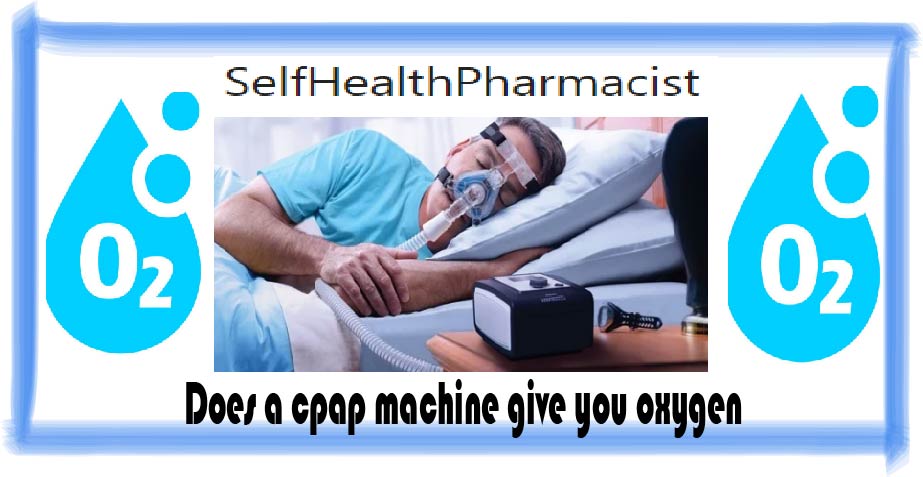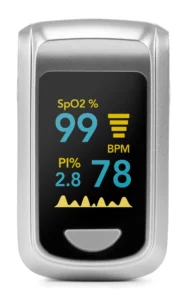As we already know, CPAP therapy is performed using special devices. CPAP Therapy is assisted ventilation by supplying pressurized air into the airways.
The CPAP sleep apnea device is a compressor that pumps air into the face mask to help you breathe normally.
CPAP machines significantly improve the quality of life of patients with obstructive sleep apnea. They normalize sleep and improve respiratory function.
By choosing the right CPAP device, you can avoid stopping breathing during sleep and developing complications.
Breathing disorders during sleep can be dangerous to health and lead to serious complications.
As for the working process and benefits of CPAP Therapy, it is already known from previous articles , so today, I want to look closer at the CPAP Machines working details…
Do you know that pulse oximeter can help you in detecting a sleep apnea?Pay attention to the best pulse oximeter in the market:Oxiline Pulse X Pro is currently the best fingertip pulse oximeter on the market with the easiest adjustment to your smartphone.
It can measure your Saturation Measurements and Perfusion Index in several seconds with 99% accuracy!
It can be used by both professional specialists and ordinary users at home. The latch fits snugly to the finger and does not move out during operation.The gadget consumes a minimum of energy, so it does not require frequent replacement of batteries.
Table of Contents
How does a CPAP Machine Work?
The mechanism of action is quite simple.
In Obstructive Sleep Apnea Syndrome, the upper airways at the level of the pharynx periodically collapse and develop either apnea (complete cessation of breathing) or hypopnea (incomplete cessation of breathing, but with a significant decrease in ventilation).
The CPAP machine recognizes these stops during sleep and pressurizes the upper airways, preventing them from collapsing.
Thus, the method eliminates 100% snoring, nocturnal respiratory arrests (apnea and hypopnea), daytime sleepiness and other symptoms of obstructive sleep apnea syndrome from the first night of use…

Does a CPAP Machine Give You Oxygen?
The CPAP machine (CPAP – Continuous Positive Airway Pressure) is a small compressor that supplies a constant stream of air (oxygen) at a given pressure to the patient’s airways through a flexible tube and a face (nasal) mask.
Sleep aids for sleep apnea prevent the airways from closing. They supply air at low pressure, ensuring proper inhalation, and carry out normal ventilation of oxygen of the lungs.
The result of using CPAP therapy is as follows:
- Sleep becomes calm;
- Apnea disappears, and breathing returns to normal;
- Blood pressure returns to normal;
- The heart rhythm normalizes;
- The general condition of the patient improves;
- The level of sugar decreases.
Patients starting treatment with CPAP therapy report an immediate improvement in well-being, increased alertness at work.
In some cases, non-invasive ventilation is used to reduce dependence on lung steroid therapy. CPAP therapy is less uncomfortable than ventilation.
Do CPAP Machines Make Oxygen?
CPAP device delivers a heated and humidified mixture of air and oxygen and, through a sealed interface, creates a constant stretching pressure throughout the respiratory cycle.
СPAP Machine is sensitive to the rhythm of a person’s breathing and supplies additional air to increase the pressure in the airways in order to improve their patency, helping the airflow on a natural breath to overcome the obstacle.
Can you Add Oxygen to a CPAP Machine?
You can add oxygen to a CPAP Machine.
For example, the RAMP function only turns on high therapeutic pressure air after you fall asleep.
Up to this point, the air is supplied at low pressure, i.e. you breathe almost normally. Another useful option is called EPR, CFLEX or E-Adapt (depending on the manufacturer).
At the same time, the device gives out a given therapeutic pressure on inspiration, and on exhalation it lowers it, making breathing more comfortable.
But if you see an oxygen leak from the mask it is called an air leak.
Since the mask may not fit tightly to the face, small air leaks occasionally occur.
In addition, air leaks occur through the mouth and occur when nasal masks and cannulas are used.
Minor air losses do not reduce the effectiveness of treatment, as modern CPAP machines automatically regulate and maintain the required pressure.
Large air losses cause a violation of the entire healing process, and therefore require immediate correction of the situation.
What To Do With an Air Leak?
- Check that the size, type of mask, and shape of the patient’s face match.
- Adjust the tension of the straps.
- Use full face mask types to minimize air leakage.
- Make sure that the retainer or gasket is correctly installed in the place where the mask is pressed against the back of the nose.
- Use the chin straps to secure the lower jaw in the closed position.
- Use for treatment devices with the function of automatic pressure adjustment.
- Use a heated humidifier.
Indications and Contraindications for CPAP Therapy
The main reason for prescribing CPAP therapy is snoring, which is accompanied by short pauses in breathing during sleep.
However, not every apnea becomes a reason for the appointment of CPAP. The doctor will primarily rely on:
- Lack of effectiveness of other treatments
- Apnea index (AI) – the number of episodes of respiratory arrest not shorter than 10 seconds per hour. If IA is above 20, hardware treatment is prescribed in the presence of concomitant pathologies.
The presence of severe concomitant diseases of the cardiovascular system (ischemia, hypertension, history of heart attacks) – since the risk of these diseases with regular sleep apnea increases many times…
Despite the non-invasiveness and safety of treatment, CPAP procedures have contraindications:
- The presence of a history of pneumothorax (the penetration of air into the sealed pleural cavity surrounding the lungs, usually from the lung, due to a violation of the integrity of the pleura);
- Pneumomediastinum (accumulation of air in the tissue of the mediastinum);
- Pneumocephalus (air penetration under the skull). As a result of artificial air injection, these diseases can return, progress
- Frequent sinusitis (inflammatory diseases of the paranasal cavities)
- Infectious eye diseases in the acute period or recurrent
- Surgical interventions on the brain, including on any part of the pituitary gland
- Decompensated heart failure
- Hypotension
- Frequent nosebleeds of unknown etiology…
Final Words
Before starting CPAP Therapy , take the time to read the user manual for your CPAP machine.
The better you know the machine, the faster you will stop being afraid of it.
Many modern models have features that allow you to speed up adaptation and reduce any discomfort.
CPAP therapy involves an adaptation period.
It is not uncommon for patients to take up to several weeks to adjust to the mask and the new conditions for a night’s rest.
FAQ
Why Do I Feel Dryness in the Nose and Mouth during CPAP Therapy?
A feeling of dryness in the nose and mouth is a frequent companion of those who begin CPAP therapy.
If you are faced with this problem, a humidifier, which is built into many models, will help you. Even if initially this device was not included in the kit, if necessary, you can always buy it separately.
Does a CPAP Machine Use Oxygen?
CPAP device delivers a heated and humidified mixture of air and oxygen and, through a sealed interface, creates a constant stretching pressure throughout the respiratory cycle.
How to Add Oxygen to a CPAP Machine?
With the RAMP function you can activate high therapeutic pressure air after you are asleep.
Up to this point, the air is supplied at low pressure, i.e. you breathe almost normally.
